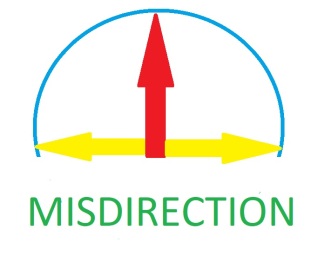 “Misdirection is a form of deception in which the attention of an audience is focused on one thing in order to distract its attention from another.” -Wikipedia
“Misdirection is a form of deception in which the attention of an audience is focused on one thing in order to distract its attention from another.” -Wikipedia
Misdirection is a phrase normally used to describe magic and pick pocketing. Over the decades, since the discover of vitamin D for the use in medicine and health, misdirection of vitamin D has been the order of the day. Certainly, a lot of the misdirection is a poor understanding of all the benefits that vitamin D3 provides in very small quantities.
Also, the lack of understanding of how toxic higher levels of some sterols can be, like vitamin D2. When ergosterol is irradiated with UV light it is almost impossible to not form a toxic substance called toxisterol. Ergosterol was first isolated from ergot fungus. If you recall, ergotism or St. Antony’s Fire is the burning pain in limbs and manic behavior, sometimes with hallucinations. The ergot is found on mushrooms and fungus on grains like rye and corn when harvested after long periods of rain.
I believe the warnings about vitamin D that were identified during the last IOM study for vitamin D and calcium were all related to studies that were performed with vitamin D2. Vitamin D2 is not safe with a serum 25(OH)D2 higher than 50 ng/ml, and the IOM board said as much. However, they did not distinguish between D3 and D2 which is a huge mistake. There does not appear to be any toxicity with vitamin D3 under 200 ng/ml of 25(OH)D3. So, staying under the upper range of 100 ng/ml of 25(OH)D3 for treating chronic disease should be reasonably safe. During the first attempt of using vitamin D, there were no toxicity incidents reported until vitamin D2 started to be substituted for vitamin D3.
In the early 1900s, it was assumed that ergosterol occurred naturally in humans. From Moon and Reich in 1975, The Vitamin D Problem An Important Lesson.. “We know today that this interpretation is not correct. It is specifically 7-dehydro-cholesterol which is activated by ultraviolet radiation to have antirachitic properties, and the plant steroid, ergosterol, does not occur naturally in humans or other animals. By the time this mistake was discovered in the mid-30’s, it was too late to turn the tide and rather than recognize the nonidentity of irradiated ergosterol and the natural antirachitic factor, it was proposed that “vitamin D” is represented by a large number of activated sterols which constitute the ‘vitamin D-group.’” “Prior to the advent of irradiated ergosterol there is a paucity of information regarding possible toxicity of cod liver oil vitamin D.” “Within months after the introduction of Vigantol—one of the first commercial preparations of irradiated ergosterol —reports of toxicity began to appear.” “From that time to now, these reports on the toxicity of the “vitamin D group” have literally flowed from laboratories and clinics throughout the world at a phenomenal rate of more than one per month.”
With this understanding about the difference in vitamin D2 and D3 from the 1930s, why have we continued to use vitamin D2. If intentional to not correct the problem, then it is simply about the money in health. This type of error goes on even today with the use of folic acid as equal to methyl folate. At least half the population cannot covert folic acid, a manmade molecule. Last year, it was suggested by the FDA that the word folate not be allowed on vitamins. Many mothers continue to have babies with neural tube defects. This is to say nothing of the harm done to the general population by using folic acid as a nutritional additive in processed grains. The science is clear, it is the “money lords” that are the problem with health.
This type of error of either using natural compounds that are foreign to humans or synthetic compounds causes side effects. In either case, the side effects can be very serious to health. The fear in following the science is that the population could become extremely healthy. People would live longer. Very few over the county remedies, especially for colds and the flu, would no longer be necessary. The number of doctor visits could be reduced by as much as seventy-five percent as one medical practice discovered when adding necessary vitamins and minerals to their routine treatments. If you were a congressman in the US, what would you decide. A Social Security system that would fail because people live ten years longer, and the medical segment of the economy being reduced by fifty percent (medical industry is now twenty percent of GDP, approximately, which would cause a ten percent reduction in the total economy) or a large ill population to maintain the status quo? Would there be more deaths and hunger as the economy failed? A true dilemma. I do believe that acting to sustain an institution without regard to the wellbeing of the people it serves is pure evil. If the science had been allowed to come forward as it was discovered, we would not be in this situation of poor health and declining life span. –Pandemic Survivor
